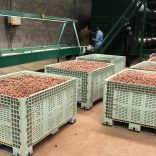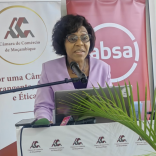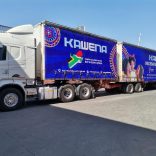Tete Mayor voices concern over donkeys, goats and cattle roaming round city
Mozambique government highlights ‘alarming risk’ posed by deforestation and soil degradation in Southern Africa

Photo: O País
Mozambique warned yesterday of the “alarming risk” of deforestation and accelerated soil degradation in Southern Africa, a region that has lost at least 800,000 square kilometres of Miombo since 2000, calling for collective efforts to halt deforestation.
“Deforestation and soil degradation are accelerating at an alarming rate. Since 2000, the Miombo ecosystem has lost approximately 800,000 square kilometres, an area larger than the total land area of Mozambique. This is not just an environmental statistic; it is a direct threat to the prosperity, health, and future generations of the region,” said Gustavo Dgedge, Mozambique’s Secretary of State for Land and Environment.
Dgedge was speaking yesterday in Maputo at the opening of the regional workshop of the Dryland Sustainable Landscapes Impact Programme, a Southern African regional exchange mechanism on this topic, and acknowledged challenges in preserving ecosystems in the southern region of the African continent.
“The Miombo and Mopane ecosystems represent a vital foundation for Southern Africa. They are a shared heritage that harbours extraordinary biodiversity, regulates the climate and water resources, and supports the livelihoods of more than 300 million citizens. However, this vital foundation is under great pressure,” said Gustavo Dgedge.
He added that Southern Africa faces increasing desertification and soil degradation, while arid zones expand, with “extremely serious” consequences that include the loss of productive soils, with salinisation and physical disruption which make soils unsuitable for agriculture, and severe environmental impacts, including ecological imbalance and biodiversity loss.
According to Gustavo Dgedge, these challenges arise at a time when 75% of African land is already classified as arid or semi-arid, with forecasts of expansion between 5% and 8% by 2080.
Regarding Mozambique specifically, the Secretary of State acknowledged “urgent challenges” in the sustainable management of drylands in the face of a reality which “takes on dramatic proportions.”
“The southern provinces, such as Gaza and Inhambane, have seen reductions of 20% to 30% in annual rainfall in recent decades, accompanied by rising temperatures and prolonged periods of drought that affect approximately 2.3 million people in this region alone,” warned Gustavo Dgedge.
Mozambique also called for a commitment to the conservation and rational use of forest resources to maintain economic, social, and environmental benefits, adapting management techniques to dry environments with fragile ecosystems, including planting drought-resistant species, water conservation, combating erosion, and involving local communities.
“This belief in integrated and transboundary action is why we advocate for the Maputo Declaration on the Sustainable Management of Miombo Woodlands (…). Our vision is that the future of these landscapes cannot be assured by any single nation,” Dgedge said, calling for joint action to protect the forests.
The Miombo Woodland covers two million square kilometres and supports the livelihoods of more than 300 million people in eleven southern African countries, including tropical and subtropical grasslands, shrublands, and savannas. It constitutes the largest tropical dry forest ecosystem in the world and currently faces, among other challenges, deforestation, with the restoration process being led by Mozambique.
The Mozambican government hopes to mobilise investments to protect the Miombo Forest, which also covers part of Angola’s territory, estimated in the action plan at US$550 million, of which US$153 million has been guaranteed since 2022, with another US$500 million added last year.













Leave a Reply
Be the First to Comment!
You must be logged in to post a comment.
You must be logged in to post a comment.